Cocooning the past. Plutonium reactor in Eastern WA encased in steel to protect the river
A reactor at the Hanford site has been “cocooned” for the first time in a decade.
The addition of a new steel enclosure for the 1950s reactor is an “iconic change to the landscape” at the nuclear reservation along the Columbia River and helps protect the river, said John Eschenberg, president of Department of Energy contractor Central Plateau Cleanup Co.
Eight of the nine plutonium production reactors that line the Columbia River in Eastern Washington are being put in temporary storage for up to 75 years to allow radiation in their core to decay to lower levels before a permanent solution is attempted.
The newest cocoon, with its straight sides and sloping roof, creates a new look for the Hanford skyline, much different from the other cocooned reactors which retain much of the original shape of the reactors.
Completion of the cocoon over the K East Reactor leaves just one more to be cocooned at Hanford.
The K East Reactor was number seven, with its twin, the K West Reactor, not expected to be cocooned until about 2030.
The ninth reactor, B Reactor, will remain unsealed and open for tours as part of the Manhattan Project Historical National Park.
From World War II through the Cold War Hanford produced about two-thirds of the plutonium for the nation’s nuclear weapons program.
Production stopped with the end of the Cold War, and now the nation is spending for than $2.5 billion a year on environmental cleanup work at the 580-square-mile nuclear reservation by Richland.
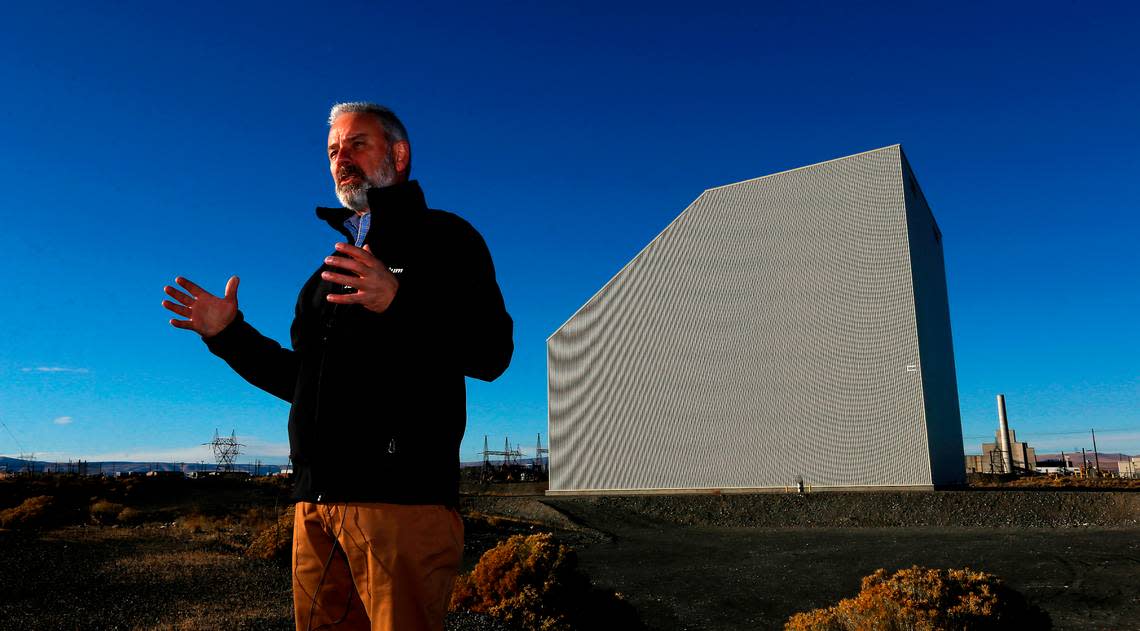
For the K East Reactor a new form of temporary storage was used that Hanford officials expect to save money and better protect the reactor as it waits for final disposition in the coming decades.
No decision has been made on the final plan for disposing of Hanford’s defunct reactors, but allowing radiation to decay will provide safer conditions for workers then.
In Hanford’s traditional cocooning, reactors are torn down to little more than their radioactive core, any openings are sealed up and the roof is replaced.
New type of reactor cocoon
But for the K East Reactor, a new, free-standing structure 123 feet tall and nearly 154 feet wide was built over the reactor for the first time.
The new method of cocooning should better protect the nearly 80-year-old concrete of the reactor from wind, sand and cycles of freezing and thawing that take a toll on Hanford structures, Eschenberg said.
It also should reduce the need for roof maintenance.
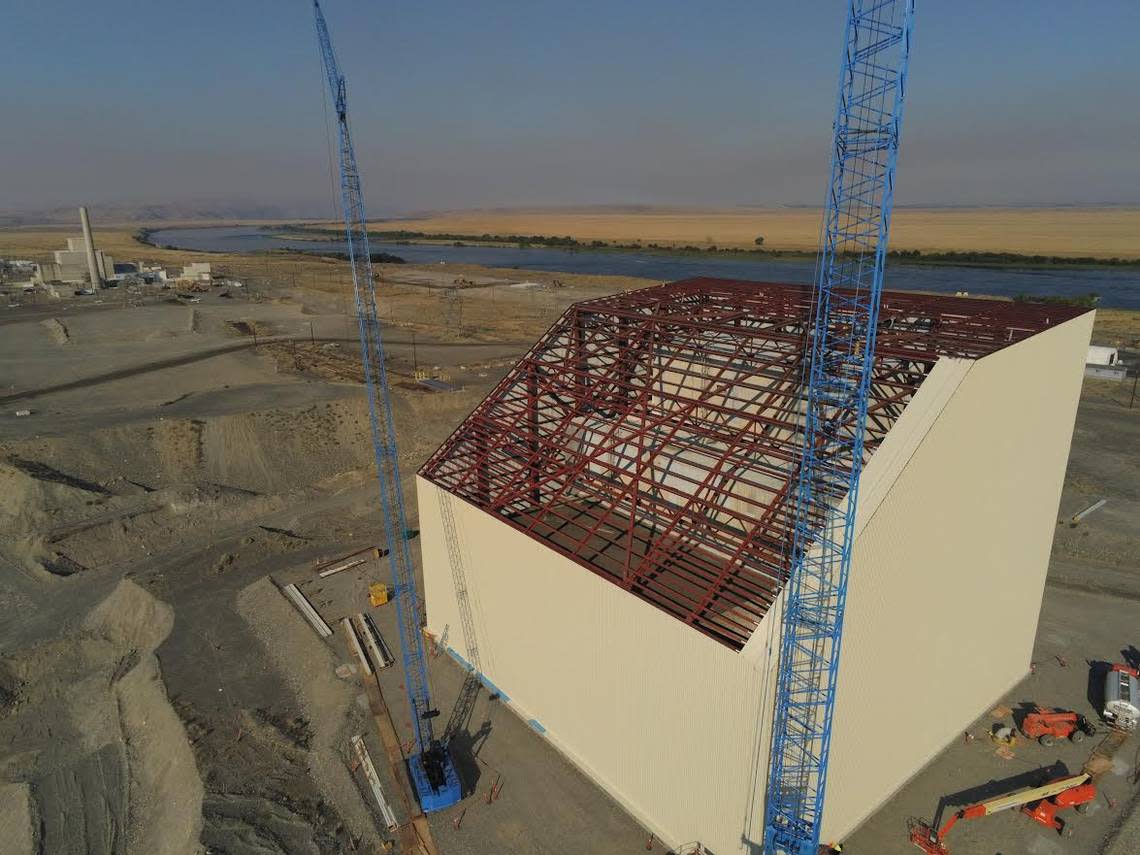
Although the new steel enclosure was designed to last 75 years, Eschenberg said final disposition of the reactor is not likely to be done that late. No decision has been made on what final disposition will be.
Every five years Hanford workers will enter the reactor to check on its condition.
New lighting installed within the reactor and between the steel cocoon and the original reactor walls will help make that easier as workers check the condition of the concrete, look for any rodents or other animals, and make sure there has not been any intrusion of water.
Not only was the work to build the cocoon done safely, but the project was completed a few months ahead of schedule and significantly under the original budget, said Brian Vance, manager of the DOE Office of River Protection and Richland Operations Office.
Cocooning the reactor was budgeted at $13.5 million, but was completed for $9.5 million, Eschenberg said.
The project came in under budget despite the nation’s supply chain issues over the last year, with escalating costs of steel, he said.
The project used 620 tons of structural steel.
Good planning, efficient work and the performance of workers and Eastern Washington companies kept costs in line, he said.
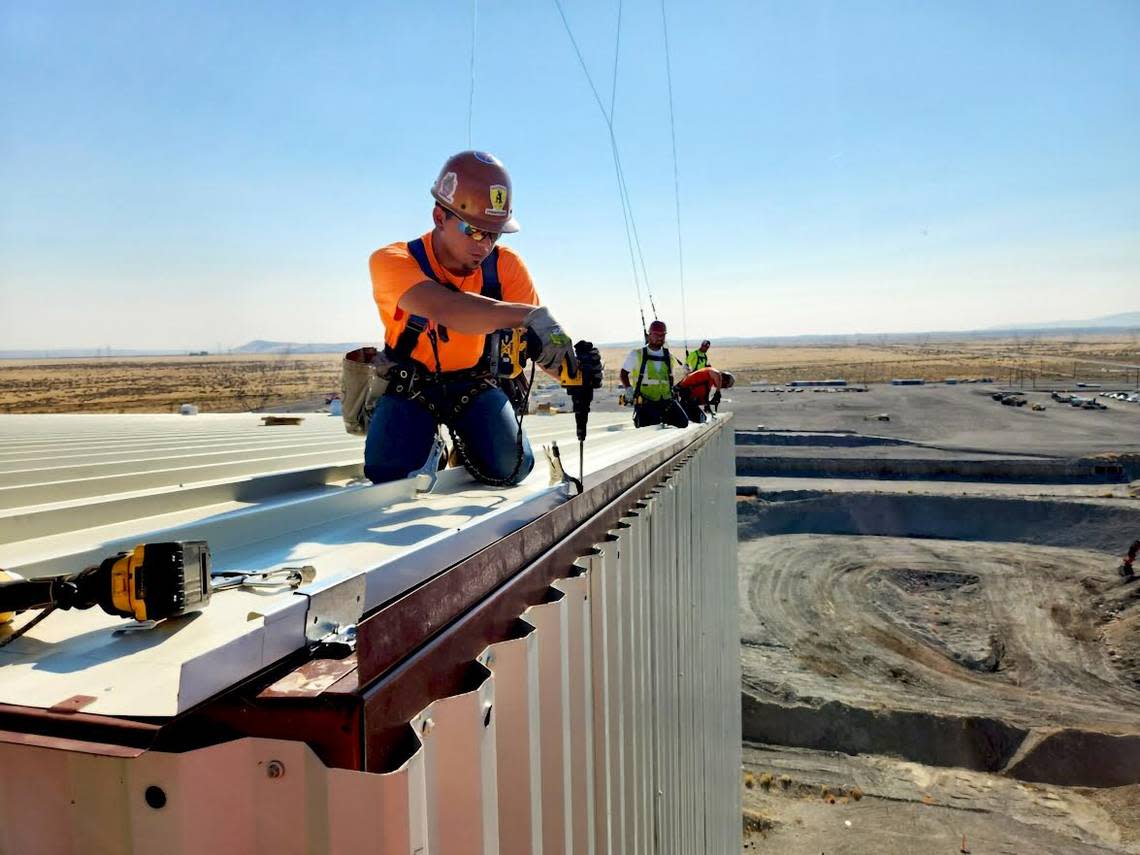
Central Plateau Cleanup Co. hired DGR Grant of Richland as the contractor for the cocooning. Earthwork was done by Watts Construction of Kennewick, electrical work was by American Electric Inc. of Richland and steel supply and erection was done by American Ironworks & Erectors of Spokane.
Eschenberg also praised the work of the Central Washington Construction and Building Trades Council crafts workers.
Decades of cleanup before cocooning
The initial work at the K East Reactor to allow cocooning of the reactor, which operated from 1955 to 1971, started decades ago.
The water basins at the K West and K East reactors were used to store uranium fuel irradiated at N Reactor but not processed to remove plutonium at the end of the Cold War.
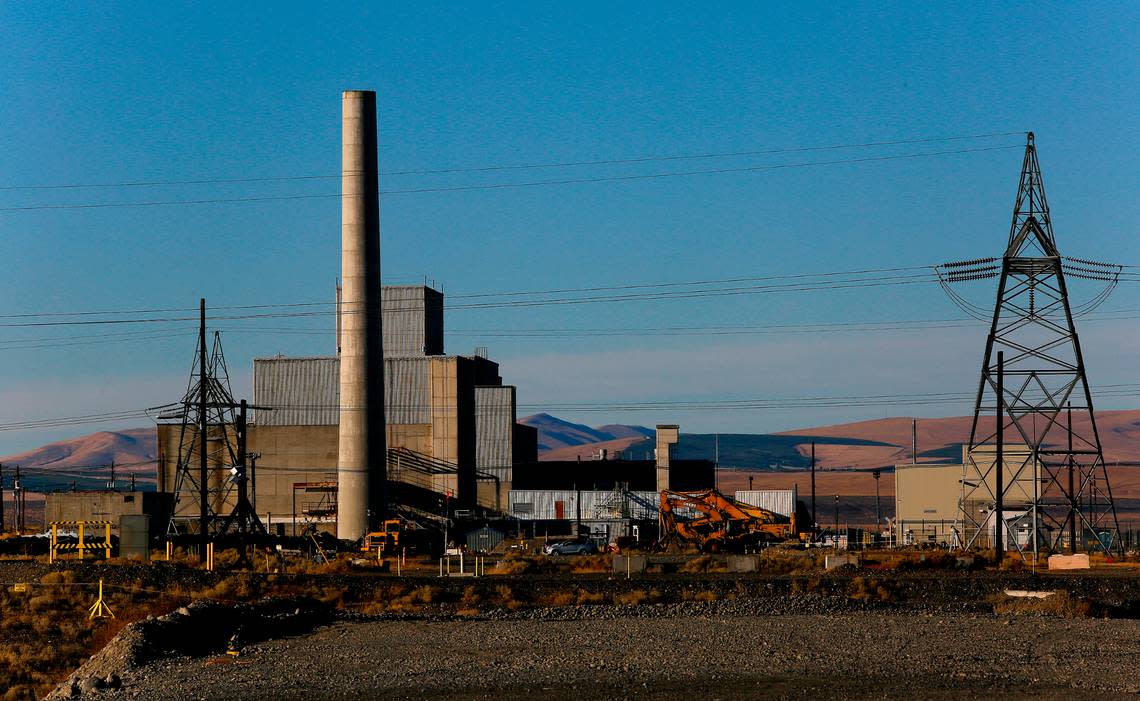
The fuel was removed from the two basins, each holding 1.2 million gallons of water, in a 10-year project completed in 2004.
But the fuel had decayed after decades underwater, leaving a highly radioactive sludge that was not all contained and shipped to dry storage at Hanford’s T Plant until 2019, after first being consolidated at the K West Reactor.
Water next was drained from the K East Reactor basin, which is work not yet done at the K West Reactor. The dry K East Reactor basin was filled with grout that was then cut into pieces and removed, requiring the site to be backfilled.
A village of support structures had to be demolished, including the reactor’s powerhouse and fuel oil storage. In addition, sediment basins used for reactor cooling water had to be cleaned up.
Tens of thousands of tons of contaminated soil and debris, including underground piping and utilities, were removed, with most of it taken to a huge lined landfill in central Hanford for disposal.
Most of the soil contamination was from chromium, which was used as a corrosion inhibitor in reactor cooling water. Groundwater contaminated with chromium is pumped up, cleaned and returned to the ground before it enters the Columbia River, about 300 yards from the K Reactors.
The reactor structure was prepared for cocooning by abating asbestos and isolating the electrical system.
Cocooning took about 1 year
DGR Grant was awarded the contract for the cocooning in August 2021 and work took just over a year.
Earlier this year crews finished backfilling and compacting the area around the K East reactor with about 34,000 cubic yards of sand and gravel to level the site.
Then a six-foot foundation was poured to support construction of the cocoon.
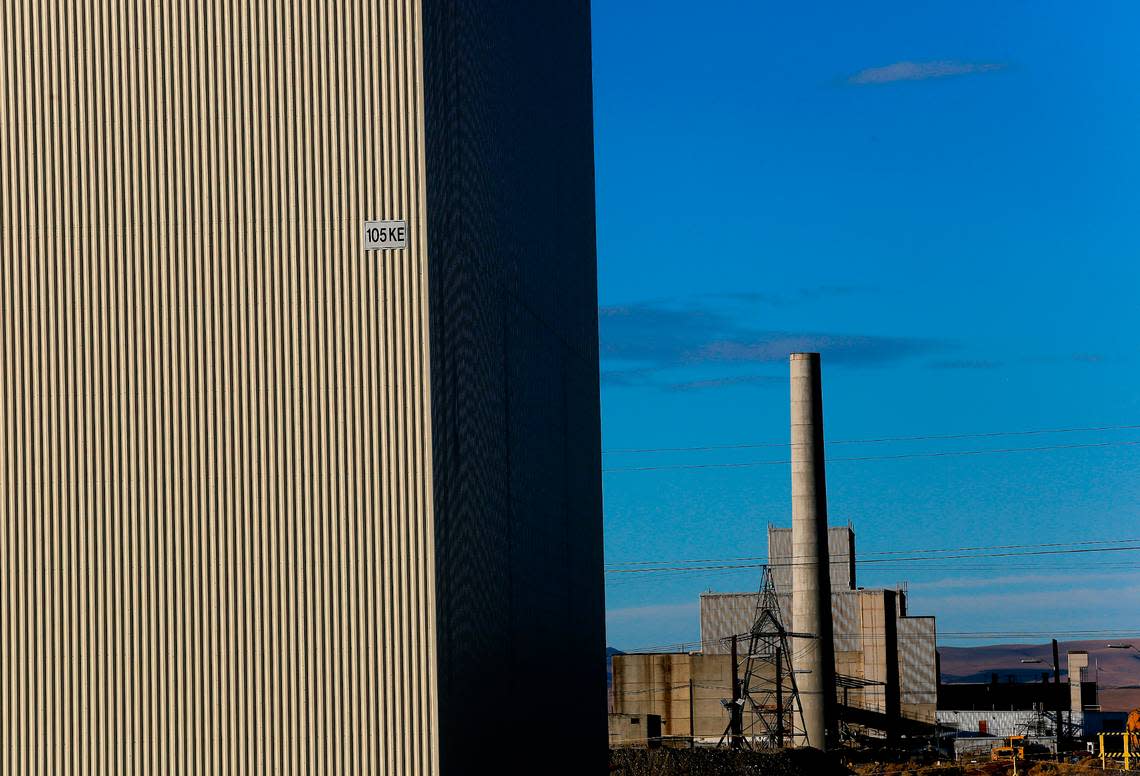
“The new approach does not rely on any of the existing (reactor) structure to support the new cocooning structure,” Eschenberg said.
The first steel columns for the cocoon were placed in mid May, with construction of the frame and installation of the metal sheeting on the walls and roof continuing through the summer.
Many of the other environmental cleanup workers at Hanford are tackling — including emptying underground waste tanks and cleaning contaminated groundwater — are not as visual.
“The skyline changes are impressive for everyone,” Vance said.
